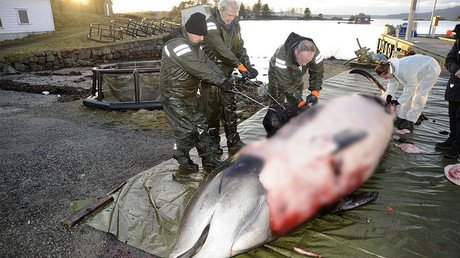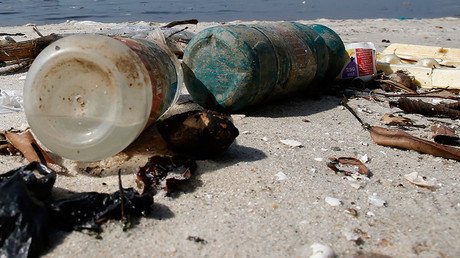‘Plastic soup’: Invisible pollutants from everyday objects contaminating oceans, study says

A trip to the seaside can provide beautiful vistas and a relaxing escape, but the seemingly pristine waters of the world’s oceans are hiding invisible pollution from everyday products including clothing and tires, according to a new study.
The research, released by the International Union for Conservation of Nature (IUCN) on Tuesday, examined the effect of primary microplastics on the world's oceans.
Primary microplastics are plastics that enter bodies of water in the form of small particles, as opposed to larger plastic waste which is easily visible to the naked eye.
Sources of the invisible pollution include car tires, synthetic textiles, marine coatings, road markings, personal care products, plastic pellets and city dust, according to the study.
Although such pollution isn't easily seen, the report states that between 15 and 31 percent of the estimated 9.5 million tons of plastic released into the oceans each year could be primary microplastics, making them a large contributor to the ‘plastic soup’ clogging oceans.
Almost two-thirds come from the washing of synthetic textiles and the abrasion of car tires while driving, according to the study.
The report noted that in developed countries which practice effective waste management, primary microplastics are a larger source of marine plastic pollution than plastic waste.
Tires were found to be the number one culprit of the pollution in the Americas, Europe and Central Asia, while synthetic textiles were the main source in Asia.
The situation is particularly worrisome in the Arctic, the biggest source of seafood for Europe and North America.
“It seems the microplastic is freezing into the sea ice, and since you actually lower the melting point of ice when you have small particles in it, you have a quicker disappearance of sea ice,” Karl Gustaf Lundin, who heads IUCN's Global Marine and Polar Program, told AFP.
He pointed out that when the ice melts, it releases plankton that attracts fish, allowing the plastic particles to “go straight into our food chain.”
Lundin said that although few studies have been done on the impact of tiny plastic particles on human health, “we have to assume that there probably will be considerable impact” because they are small enough to move through human membranes.
IUCN director General Inger Andersen called the report a “real eye-opener, showing that plastic waste is not all there is to ocean plastics.”
She went on to note that daily activities “significantly contribute to the pollution choking our oceans,” stating that they have “potentially disastrous effects on the rich diversity of life within them, and on human health.”
Anderson said the report shows that humans must look beyond waste management in order to fully address ocean pollution, and called on private sector leadership to undertake the necessary research and development.
Marine project manager for IUCN's Global Marine Program Joao de Sousa said the findings have “important implications for the global strategy to tackle ocean plastic pollution, which currently focuses on reducing plastic waste.”
He went on to state that solutions must include product and infrastructure design, along with consumer behavior.
“Synthetic clothes could be designed to shed fewer fibers, for example, and consumers can act by choosing natural fabrics over synthetic ones,” de Sousa said.
Lundin also stated that tire makers could revert to using mainly rubber, while textile manufacturers could stop using plastic coatings on clothes. He also suggested that washing machine makers could install filters to catch micro and nano plastic particles.














